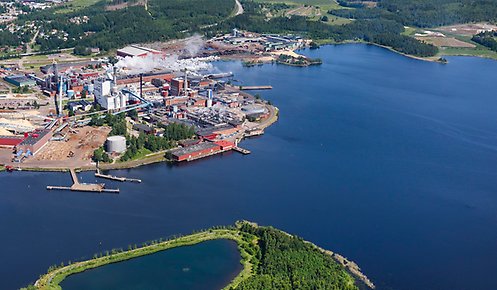
Field: Svensk infrastruktur för innovationsförmåga och näringslivsdynamik
When a door closes, a window opens
When a municipality or a locality is affected by a major business closure, quick measures are required. In the report "When a door closes, a window opens - A report on conversion processes in case of major company closures" conversion processes are studied in three municipalities: Robertsfors, Hudiksvall and Oskarshamn. The three municipalities have all suffered major closures and notices during the 2010s.
Processes in focus
The purpose of this report is to contribute with knowledge for more effective transition work when the closure of a large company or large-scale redundancies impact a municipality. We first provide a background to the geography of recovery – regional differences in decline and recovery in the context of previous economic crises. The next step looks at three case studies, we further develop our knowledge of the mobilization processes that are often initiated, what actually happens, who is involved and how the system works. We also look at experiences and views of the organizations and major players involved regarding the factors that promote and slow down such processes. Based on our inter-views and supplementary reports and investigations, we provide some concrete proposals for policy measures that we believe can contribute to more effective transition work.
Structural change and crises
Companies operate in a competitive environment that is constantly changing. If an individual company is to maintain – or improve – its competitiveness, continuous adaptation is required. For those who are not successful in this respect, there will be a decline in profitability, a loss of market shares and, ultimately, the risk of exclusion. Such a process can be termed as structural change.
In addition to long-term transformational pressures, sudden events, crises or economic shocks can also occur. Clear examples may include country-wide exogenous crises such as the so-called 90s crisis, the global financial crisis or the corona pandemic. There may also be more limited economic shocks that affect a specific town or municipality in the form of large-scale company closures.
From a long-term, national perspective, structural change is a necessary element in an economy that is dynamic and growing. Production resources are shifting from stagnant, low-productive sectors and activities to more expansive and productive ones. At a local level, the consequences may vary. Increased investment, new job opportunities, higher tax revenues or the complete opposite for those towns, cities and municipalities affected by extensive redundancies. For the latter, the situation is often described in terms of crisis and deep concern. Similarly, there is a difference in perspective between individuals who are offered new jobs and those who are laid off.
The geography of recovery is not homogeneous
At the same time as deeper crises have led to major job losses in all types of municipalities, we see significant differences in the geography of recovery. In metropolitan municipalities, employment opportunities after the downturn have improved and reached higher levels than before both the 1990s crisis and the global financial crisis of 2008-09. In more peripheral municipalities, recovery has been significantly worse. This is especially true for rural municipalities. For these, previous economic crises have meant permanent job losses.
We find a similar pattern when, instead of looking at the aggregate level, we focus on how those people who lost their jobs during the financial crisis fared. Although job losses lead to long-term negative effects in all types of municipalities, individuals who are made redundant in rural municipalities are particularly hard hit. The proportion of people who find an equivalent job in rural municipalities is the lowest. The initial loss of wages for redundant workers is also clearly greater in these municipalities. We also see that people who are made redundant in rural municipalities to a greater extent choose to start commuting or move to other municipalities.
Mobilization and transition processes are initiated
When economic shocks, large-scale redundancies and redundancies occur, a local and regional mobilization process is often initiated. The purpose is then to alleviate the negative consequences and at the same time stimulate transition and find new solutions. The efforts made can be both individual and place-based. Various organizations are involved and often collaborate in a specially formed, temporary, organization. These are the processes that we examine in more detail in this report.
In-depth study of three processes
We have chosen to study the transition processes in the three municipalities Robertsfors, Hudiksvall and Oskarshamn (see table below). In 2015 in Robertsfors, 175 employees were affected by the closure of the diamond company E6. In Hudiksvall, Ericsson decided in 2013 to close their cable factory and all 318 employees were affected. In 2015 in Oskars-hamn, the companies EON and OKG decided on the premature closure of two nuclear reactors. Consequently, 280 permanent employees were notified that they would be laid off. In addition, it was estimated that up to 500 people at subcontractors were affected.
In all three municipalities, an extensive transition process was quickly initiated to deal with the situation. The study shows that the municipality is a clear major player. Otherwise, organizations such as the County Administrative Board, the Region, the Swedish Public Employment Service, trygghetsorganisationer (the private sector employment social security organizations), trade unions and the company whose dismissals or redundancies initiated the entire process, are identified.
When a door closes, a window opens
Serial number: Rapport 2022:13
Reference number: 2021/141
When a door closes, a window opens Pdf, 1.9 MB.
A partial study of the project:
Delstudier i projektet
Den här studien är en del av ett kunskapsprojekt där följande studier också ingår.








